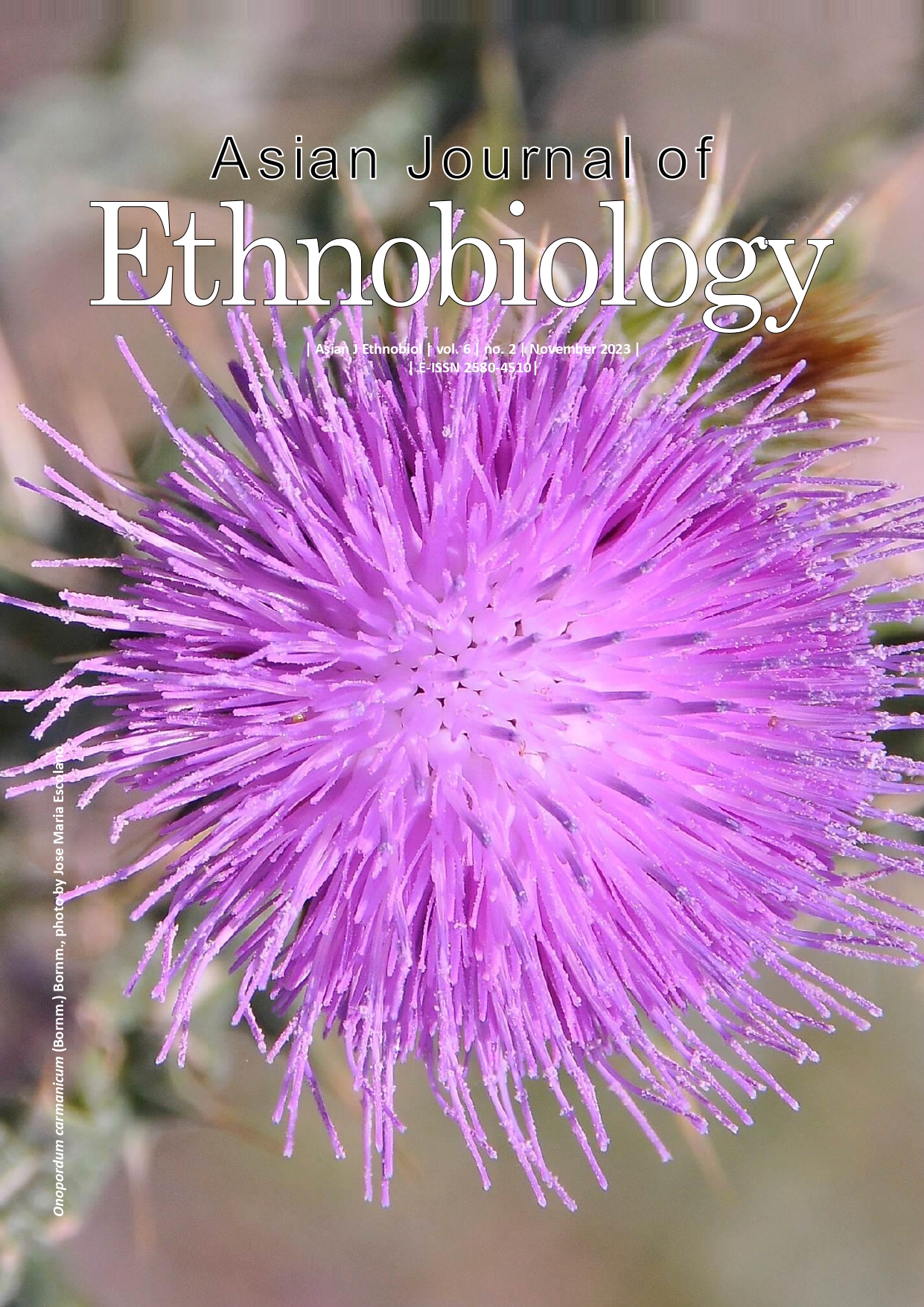Ethnobotany of medicinal plants in homegarden of Menoreh Karst Area, Purworejo District, Indonesia
##plugins.themes.bootstrap3.article.main##
Abstract
Abstract. Igustita, Fatikha LA, Astikasari L, Kusuma D, Nugraheni RS, Muryanto BS, Anshory DA, Hidayat S, Yasa A, Naim DM, Setyawan AD. 2023. Ethnobotany of medicinal plants in homegarden of Menoreh Karst Area, Purworejo District, Indonesia. Asian J Ethnobiol 6: 174-184. Many medicinal plants can grow in karst areas, one of which is found in the Menoreh karst mountain area, southern of Central Java, Indonesia. Therefore, this research was conducted to determine the diversity and utilization of medicinal plants in the homegarden of the Menoreh Karst area, i.e. Donorejo Village, Purworejo District, Indonesia. The data was collected from plant inventory and interview activities. The plant inventory is carried out through direct house-to-house surveys to observe existing plants and then record and document each species of plant, while interviews were conducted primarily to determine its use as a medicinal ingredient. 46 respondents (households) were interviewed, mostly farmers (47.8%). The result showed that there were 55 species of plants from 34 families used to treat various diseases, such as wounds, digestive disorders, diarrhea, cold/flu, hypertension, etc. The most commonly treated disease is wounds (7 species). The plants commonly used were ginger, turmeric, and vanilla, while the mostly plant family used was Zingiberaceae (7 species and 1 variety). The tree (36%) and shrub (31%) were the most plant habitus used, and the leaves (49%) were the most part used. Most medicinal plants were boiled and then drunk. Almost all species used was cultivated plant (90%). Knowledge about medicinal plants passed down from generation to generation, through trial processes by ancestors, was still maintained. This research shows that homegardens are very important for public health, because of the diversity of plants and the diversity of diseases they can treat.
2018-01-01

